Nomenclature Stress/Strain Formulae
|
Basic Definitions Note: For more detailed stress & strain
notes refer to webpage Stress & Strain Strain = Change in length (dL)over original length (L) e = dL / L Stress = Force (F) divided by Area withstanding Force (A) σ = F / A Young's Modulus E = Stress ( s ) / Strain(e). This is a property of a material E = s / e Bending General Formula for Bending M / I = s / y = E / R W and w as used below for beam concentrated load, total load and uniform distributed load are assumed to be in units of force i.e. Newtons If they are provided in units of weight i.e kg then they should be converted into units of force by mutliplying by the gravity constant g (9.81) Simply Supported Beam . Concentrated Load 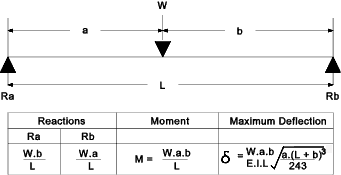 Simply Supported Beam . Uniformly Distributed Load 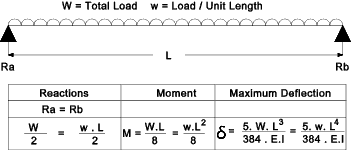 Cantilever . Concentrated Load 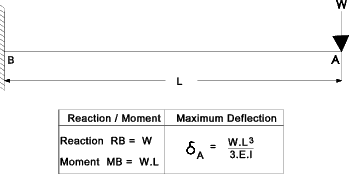 Cantilever . Uniformly Distributed Load 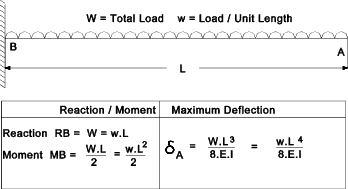 Fixed Beam . Concentrated Load 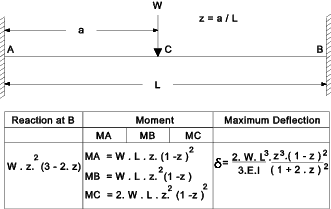 Fixed Beam . Uniformly Distributed Load 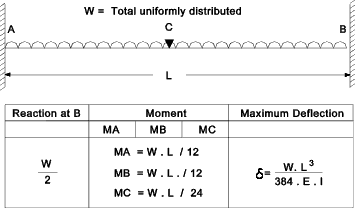 Torsion /Shear Poisson's Ratio = ν = (lateral strain / primary strain ) Shear Modulus G = Shear Stress /Shear Strain G = τ / ε = E / (2 .( 1 + ν )) General Formula for Torsion A shaft subject to a torque T having a polar moment of inertia J and a shear Modulus G will have a shear stress q at a radius r and an angular deflection θ over a length L as calculated from the following formula. T / J = G . θ / L = t / r More detailed notes on torsion calculations are found at webpage Torsion Pressure Vessels - Thin Walled Cylinders For a thin walled cylinder subject to internal pressure P the circumferential
stress = σc This stress tends to stretch the cylinder along its length. This is also called the longitudinal stress. σc = P . d / ( 4 . t ) For a thin walled cylinder subject to internal pressure P the tangential
stress = σc σt = P . d / ( 2 . t ) The above two formulae are only valid if the ratio of thickness to dia is less than 1:20 Pressure Vessels - Thick Walled Cylinders The equations for the stresses in thick walled cylinders are derived on web page Cylinders
r1 = internal radius Consider a cylinder with and internal diameter d 1, subject to an internal pressure p 1. The external diameter is d 2 which is subject to an external pressure p 2. The radial pressures at the surfaces are the same as the applied pressures therefore σ r = A + B / r 2 - p1 = A + B / r 12 The resulting general equations are known as Lame's Euqations and are shown as follows
If the external pressure is zero this reduces to
If the internal pressure is zero this reduces to
|
|
|
Formulae_Index
Nomenclature
